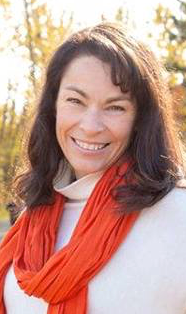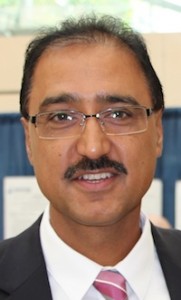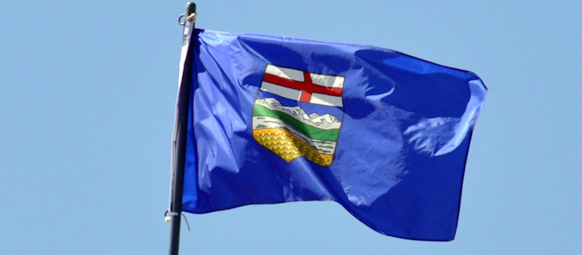The results across Canada were a mixed colour of red, orange, green, blue, and bleu as Prime Minister Justin Trudeau is returning to Ottawa to form a new Liberal minority government. But the results in Alberta were anything but mixed.
The Conservative Party earned 69.2 percent of the total vote in Alberta in Monday’s federal election, which is 3 percent higher than the party’s previous high-water mark of 66.8 in Alberta in the 2011 federal election.
It is no surprise that the vast majority of Albertans voted Conservative and that nearly all of the province’s elected Members of Parliament are also Conservative. This has happened in virtually every election since I was born, and about 25 years before that too.
Conservative candidates were elected or re-elected in most ridings in ranges from 70 percent to over 80 percent. It appears that Battle River-Crowfoot remains the strongest Conservative voting riding in Canada, with 85 percent of voters in that riding supporting the Conservatives.
Conservatives also dominated in Alberta’s two largest cities, earning 69 percent in Calgary, and 63 percent of the vote in Edmonton, which voted overwhelmingly for the Alberta NDP in the recent provincial election.
The Conservative Party and its predecessor parties have dominated Alberta for decades, and the Conservative have represented the majority of Alberta’s federal ridings since 1958, and have held all of the province’s seats from 1972 to 1977, 1977 to 1988 and 2006 to 2008.
This election has once again reminded Canadians of the regional divides in our country but it should also not be a surprise. Regional division is a feature of Canadian politics and our First Past the Post electoral system exaggerates these divides.
NDP hold Strathcona

New Democratic Party candidate Heather McPherson was elected in Edmonton-Strathcona, making her the only non-Conservative MP in Alberta and the only woman elected in the Edmonton area serving in the House of Commons.
While the NDP convincingly held off Conservative challenger Conservative Sam Lilly and Liberal Eleanor Olszewski, this election further exposed fractures between the provincial and federal NDP in Alberta.
McPherson’s opponents delighted in a decision by Rachel Notley to withhold her endorsement of McPherson until days before election day but it appears to have had no impact on the results in the riding. McPherson finished with 47 percent of the vote, four points ahead of now-former MP Linda Duncan‘s results from 2015.
Liberals lost.

Liberal MP and Minister of Natural Resources Amarjeet Sohi was defeated by Conservative Tim Uppal in Edmonton-Mill Woods, Randy Boissonnault was defeated by Conservative James Cumming in Edmonton-Centre, and Kent Hehr was defeated by Greg McLean in Calgary-Centre, leaving the Liberals with no seats in the House of Commons from Alberta, and likely no representation in the new federal cabinet from Alberta.
The Liberals saw their province-wide vote total in Alberta cut to 13.7 percent, down from 24.6 percent in 2015. The personal unpopularity of Trudeau in Alberta, fuelled by angst and frustration with the current economic situation and the consistently low international price of oil, made it very unlikely that the Liberals would do well in Alberta in 2019.
Despite Sohi’s loss in Monday’s election, the congenial and personally popular politician is frequently named as a potential candidate for Edmonton’s 2021 mayoral election if Don Iveson decides not to seek re-election.
What could a Liberal minority government mean for Albertans?
The prospect of the Liberal minority government influenced by the NDP and Greens could lead to the introduction of new national programs that will benefit Albertans – including universal pharmacare and dental care, and expanded childcare coverage – and the prospect of real electoral reform that could ease some of the rigid political divides we saw in Monday’s election.
Trudeau announced today that his government plans to move ahead with the construction of the Trans Mountain Pipeline Expansion Project, despite delays caused by court challenges from First Nations communities. Because the construction of the pipeline project does not require any votes of Parliament, the minority situation is not likely to impact the construction of the project.
Oil pipeline aside, the Liberals are expected to push forward on their climate change plans, including the introduction of a federal carbon tax in Alberta next year. In what could be a sign of changing times, New Brunswick’s Progressive Conservative Premier Blaine Higgs announced his plans to create a provincial carbon tax, dropping his opposition the federal carbon tax.
Kenney still campaigning…
Alberta Premier Jason Kenney is showing no sign he plans to end his campaign against Trudeau, announcing this week that he has sent a letter to the prime minister outlining the Alberta government’s demands, including a plan for a resource corridor and changes to the equalization formula (none of which Trudeau campaigned for ahead of Monday’s election).
Kenney has announced plans to hold a series of town hall meetings to gauge voter frustration following the federal election. This could be similar to the MLA Committee on Alberta’s Role in Confederation created by Ralph Klein and chaired by Edmonton MLA Ian McClelland in 2004, which travelled the province to gauge support for the Firewall manifesto (the committee’s final report rejected most of the manifesto’s proposals).
The town halls are both a relief valve and a steering wheel that allows people to vent their frustrations while allowing Kenney, as Klein would say, to try to keep ahead of the crowd.
Former Alberta MLA defeated in BC
Former Alberta MLA Alana DeLong was defeated in Cowichan-Malahat-Langford, finishing second with 25% behind NDP MP Alistair MacGregor. DeLong served as the Progressive Conservative MLA for Calgary-Bow from 2001 to 2015. She ran for the BC Liberals in the 2017 provincial election on Vancouver Island as well.
Is Alberta separatism on the rise? No.
The results in Alberta and bot-driven promotion of the #wexit hashtag on Twitter have fuelled a surge of media interest of Alberta separatism, an idea that has no wide-spread support in this province.
Many Albertans are feeling a real sense of frustration with the federal government, as Monday’s election results demonstrate, but there is no evidence that Albertans are flocking en masse to separatism. None.


6 replies on “Alberta is blue, but what else is new?”
Our Mr. Kenney is becoming quite the letter writer these days! It reminds me a bit of the intermittent war of letters between former Premier Wynne of Ontario and PM Harper. The country survived their very strained relationship, but their political careers did not.
I think much of the frustration in Alberta is due to the struggling economy, which is as much based on things that can’t be controlled (ie. the price of oil) as things it is perceived may be controlled (ie. pipelines). Of course, Liberal roots in Alberta were not that deep and none were elected here in 2011 either and the country survived without there being a unity crisis then. The difference was in 2011 Alberta put most of its eggs in the winning basket, this time mostly in the losing one. I suppose that is the risk one takes of often putting most of ones eggs in one basket.
As I recall from 2008 to 2015 the economy in Ontario and Quebec was not doing very well. Harper even bought (part of) auto companies, sort of like Trudeau bought a pipeline. I don’t think he got a lot of electoral thanks for it in 2015 either. Now the tables are turned and the economy here is struggling. People here are to some degree rightly frustrated and upset, but it is not all the Federal governments fault nor can it be easily fixed by them. Economic cycles go up and down and ours will eventually improve, which will probably be the ultimate solution to the current political hysteria.
Actually Dave, your left wing bias shows and you are dead wrong as usual.
120,000+ new facebook likes on an Alberta separation page proves my point.
https://dailyhive.com/vancouver/alberta-wexit-separatists
Nobody should really too surprised about the results of the election. It was part of the natural political process. In 2015, a fresh face, riding a wave of euphoria and change, stormed onto the Canadian political landscape, sweeping away the old guard and capturing a majority.
There was only one way to go after that and that was down. Politics, at its best, is the art of compromise and back room brawls. A fresh face will soon wear out its welcome.
We’ve seen this script before. In 1968 “Trudeaumania” burst onto the scene. Four years later, Pierre Trudeau barely squeaked thru with a minority against the bumbling Robert Stanfield, the underwear magnate.
Nothing new under the Canadian sun.
Youre a communist!
We are starting a new Provincial party in Manitoba and are very interested in your work.
Keep it uo
We should be with are western people in Saskatchewan and Alberta as we the west are getting no we’re and Quebec and the east have the best of everything health denial glasses and child care and government funds for child allowance check everyone should get the same the old is who we should be looking after